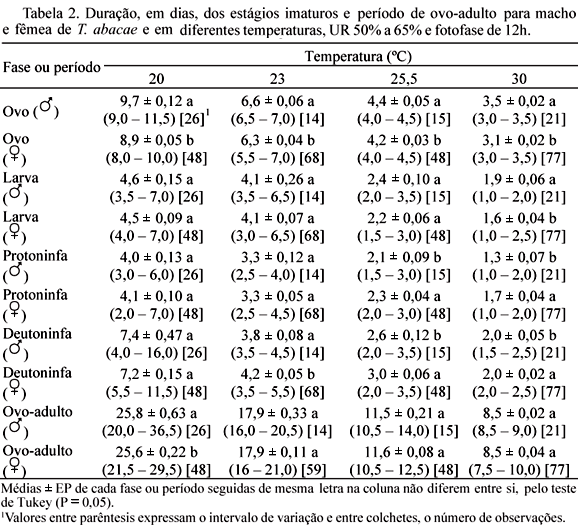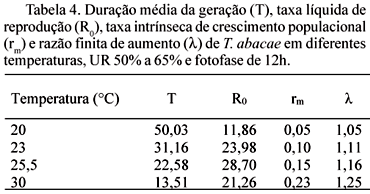The thermal requirements of Tetranychus abacae Baker & Printchard in Musa sp. cv. Prata were studied at constant temperatures (20; 23; 25,5 and 30°C), as well as the effect of the temperatures on the adult phase. Age-specific life tables were built with the data. The basal temperature and thermal constant for egg, larva, protonymph, deutonymph and egg-adult development were: 14,9; 15,2; 14,2; 16,2 and 15,3°C and 47,7; 25,4; 25,5; 27,4 and 124,3 GD, respectively. High fecundity was registered at 25,5°C. The mean duration of the generation (T) varied from 50,03 to 13,51 days between 20ºC and 30°C. The net reproductive rate (R0) was high at the temperature of 25,5°C, increasing 28,7 times at each generation. The intrinsic rate of natural increase (r m) and the finite rate of increase (l) varied from 0,049 and 1,05 to 0,226 and 1,25 between 20ºC to 30°C, respectively. It as possible to estimate that T. abacae can develop up to 31 generations per year at 26°C in field conditions and 31 generations per year at 30°C in green house conditions, in Pernambuco State, Brazil.
Mite; biology; Musaceae; life table; thermal threshold





